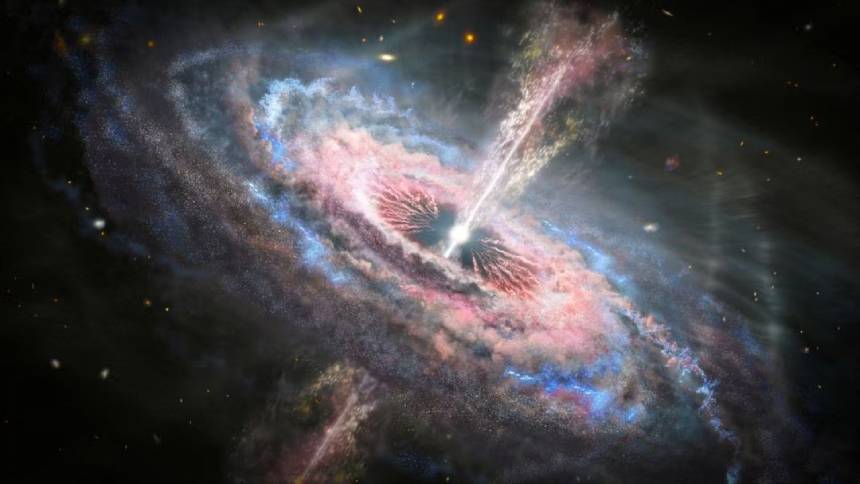NASA’s James Webb Space Telescope (JWST) has made a groundbreaking discovery that could change our understanding of the early universe. The telescope has detected a supermassive black hole that formed 13.2 billion years ago, making it the oldest black hole ever discovered.
Since its launch in 2021, JWST has aimed to study every stage of the history of the universe in order to understand the origin of the universe and human beings. It has already surpassed expectations by discovering the oldest galaxies and ancient planets that shouldn’t exist according to theoretical understanding.
The newly discovered black hole, located at the center of the CEERS 1019 galaxy, dates back 570 million years after the birth of the universe. It is estimated to be about 9 million times the mass of the sun and continues to grow by consuming surrounding interstellar gas and dust. This black hole is smaller than most objects over a billion times more massive, leaving scientists baffled by how it formed so quickly after the Big Bang.
In addition to the CEERS 1019 black hole, two other black holes have been found in the galaxies CEERS 746 and CEERS 2782. These “lightweight” black holes, weighing 10 million times the mass of the sun, could reshape our understanding of how supermassive black holes formed and grew in the early universe.
The discovery of these black holes is significant because it sheds light on the Reionization Era, a period when the universe was shrouded in a dense “fog” and ionized over hundreds of millions of years. Astronomers hope that JWST can provide answers about what caused this period of reionization.
Before JWST, these black holes were too faint to be detected by other telescopes. They appeared as ordinary star-forming galaxies rather than active supermassive black holes. However, JWST’s sensitive spectroscopy allowed researchers to measure the precise distances and ages of galaxies in the early universe.
“This is the power of this telescope,” said astronomer Steven Finkelstein. “With Webb, we can not only see extremely distant black holes and galaxies, but now we can start to measure them with precision.”
The discovery of these ancient black holes opens up new possibilities for understanding the early universe and the formation of black holes. Scientists believe that there may be many more lower-mass black holes waiting to be found.
As JWST continues to explore the universe, it holds the potential to provide even more groundbreaking discoveries that could revolutionize our understanding of the cosmos.
Please note that this article or program was edited and produced by Voice of Hope. When reprinting, please indicate Voice of Hope and include the original title and link. The editor in charge of this article is Lin Li.
